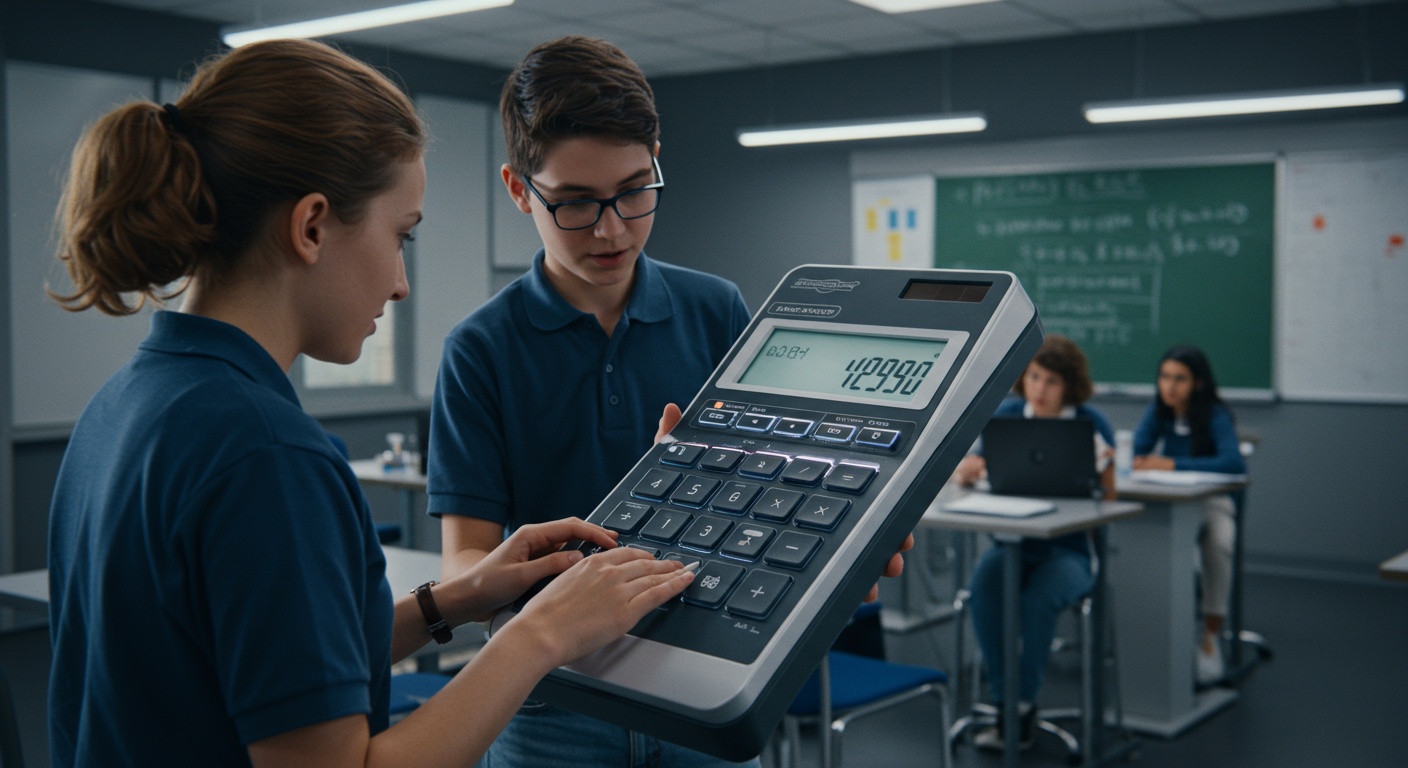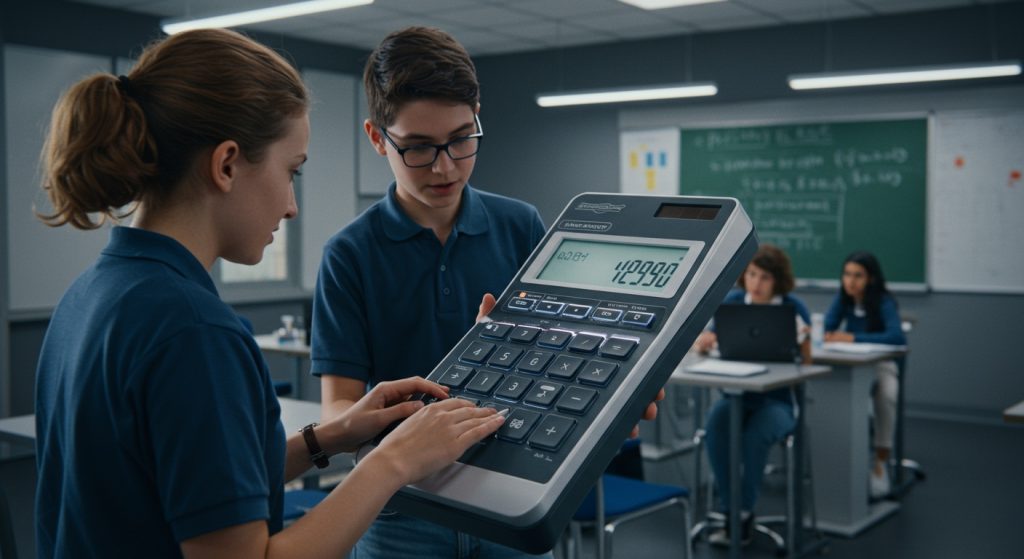The GATE examination demands not just conceptual clarity but also exceptional computational efficiency. The integrated virtual calculator often proves a significant hurdle, rather than an aid, for many aspirants. Unlike physical devices, its unique interface and specific operational nuances – such as managing memory functions or correctly inputting complex scientific expressions – can drastically impact speed and introduce errors. In a time-sensitive, highly competitive exam environment, every second counts. Optimizing your interaction with this digital tool is a critical, yet often overlooked, aspect of preparation, directly influencing precision in calculations for subjects like Network Theory or Control Systems. Developing refined GATE Exam virtual calculator usage tips and strategies transforms this potential bottleneck into a powerful asset, ensuring both rapid execution and unimpeachable accuracy.

Understanding the GATE Virtual Calculator Interface
The Graduate Aptitude Test in Engineering (GATE) is a highly competitive examination. While it primarily assesses your conceptual understanding, the efficiency with which you perform calculations plays a significant role in your overall time management. Unlike traditional exams where you might use a physical scientific calculator, GATE mandates the use of an on-screen virtual calculator. This specific tool, provided by the exam conducting body, is designed to ensure a level playing field for all candidates, preventing any unfair advantage from using advanced personal calculators. But, its interface and operational nuances can initially feel cumbersome, posing a significant challenge if not mastered beforehand. Essentially, the GATE Virtual Calculator is a standard scientific calculator emulated within the exam software. It typically features basic arithmetic operations (+, -, , /), along with scientific functions like trigonometry (sin, cos, tan), logarithms (log, ln), exponentiation (e^x, x^y), square roots (sqrt), factorials (!). Memory functions (M+, M-, MR, MC). Understanding the layout and the exact functionality of each button is the very first step towards optimizing your performance. Many aspirants underestimate this, assuming all virtual calculators are intuitive. But, subtle differences in button placement or function execution can lead to critical time loss or, worse, calculation errors.
Key Features and Functions: Beyond the Basics
While the core arithmetic functions are straightforward, mastering the scientific and memory functions is crucial for complex problems often encountered in GATE.
- Trigonometric Functions (sin, cos, tan)
- Logarithmic Functions (log, ln)
- Exponentiation (x^y, e^x)
- Memory Functions (M+, M-, MR, MC)
-
M+: Adds the currently displayed number to the memory. -
M-: Subtracts the currently displayed number from the memory. -
MR: Recalls the number stored in memory to the display. -
MC: Clears the memory. - Inverse Functions (sin-1, cos-1, tan-1): These are often accessed by pressing a “Shift” or “Inv” button followed by the respective trigonometric function. Always verify the output unit (radians or degrees) after performing inverse trigonometric calculations, as the calculator defaults to radians.
These functions typically operate in radians by default on the GATE virtual calculator. It’s imperative to remember this, as many problems might provide angles in degrees. You’ll need to convert degrees to radians (degrees π / 180) before inputting them. For example, to calculate sin(30 degrees), you’d first calculate 30 π / 180, then apply the sin function.
‘log’ usually denotes log base 10. ‘ln’ denotes natural logarithm (log base e). Ensure you’re using the correct base for your calculations.
The ‘x^y’ button allows you to raise any number to any power. ‘e^x’ calculates the exponential function. Pay attention to the order of operations when dealing with complex powers.
These are powerful tools for multi-step calculations, helping you store intermediate results without having to write them down or re-type them.
Utilizing memory functions effectively can significantly reduce errors and improve speed, especially in problems involving iterative calculations or multiple components.
Physical vs. Virtual: Adapting Your Approach
The transition from a physical scientific calculator to the GATE virtual calculator requires a conscious shift in your operational strategy. While a physical calculator offers tactile feedback and often allows for rapid key presses, the virtual counterpart relies on mouse clicks, which can be slower and more prone to errors if not practiced.
| Feature | Physical Calculator | GATE Virtual Calculator |
|---|---|---|
| Input Method | Tactile keypad, rapid key presses | Mouse clicks, on-screen buttons |
| Speed Potential | Very high, muscle memory | Slower due to mouse navigation; speed gained through precision and shortcut knowledge |
| Error Rate | Lower for practiced users; typos can occur | Higher due to misclicks or incorrect button identification; visual confirmation is key |
| Order of Operations | Generally follows standard PEMDAS/BODMAS automatically; can use parentheses | Strictly follows button sequence; parentheses are critical for complex expressions |
| Function Access | Dedicated buttons, Shift/2nd F key | On-screen buttons, often requiring clicks on “Inv” or “Shift” |
| Memorization Need | Less for button locations | High for button locations and common function sequences |
The primary difference lies in the input method. With a physical calculator, your fingers develop muscle memory for common operations. With the virtual calculator, your eyes and mouse hand need to develop similar efficiency. This means actively looking for the correct button and clicking precisely, which takes more time. This is where dedicated GATE Exam virtual calculator usage tips become invaluable.
Essential Tips for Speed and Accuracy
Mastering the GATE virtual calculator isn’t just about knowing what each button does; it’s about optimizing your workflow. Here are crucial GATE Exam virtual calculator usage tips:
- Practice with the Official Mock Calculator
- comprehend Order of Operations (PEMDAS/BODMAS)
This is non-negotiable. The exact virtual calculator interface used in the GATE exam is available on the official GATE website. Spend hours practicing with it. This builds familiarity and muscle memory for mouse clicks.
While modern calculators often handle operator precedence, it’s safer to explicitly use parentheses
( ) for complex expressions. For instance, to calculate (5 + 3) 2 , ensure you input ( 5 + 3 ) 2 = rather than 5 + 3 2 = , which would yield 11 instead of 16.
Some virtual calculators, including the GATE one, allow for limited keyboard input. For example, you might be able to type numbers directly, use +, -, , /.. from the keyboard. Experiment with the official calculator to see which keys are responsive. This can save valuable seconds. For example, typing 123+456= is faster than clicking each digit. But, complex functions typically require mouse clicks.
As noted before, these are your best friends for multi-step calculations.
Example: Calculate (AB) + (C/D) 1. Calculate AB. 2. Click M+ (stores AB in memory). 3. Calculate C/D. 4. Click M+ (adds C/D to memory). 5. Click MR (recalls the total sum). This prevents re-typing intermediate results and reduces transcription errors.
Unlike a physical calculator where you might feel a key press, a misclick on a virtual calculator is easy to miss. After entering a number or an operation, quickly glance at the display to confirm it’s correct before proceeding.
Many engineering problems involve angles. Always assume the calculator operates in radians unless explicitly stated otherwise or you have a degree mode button (which the GATE calculator typically does not). Convert degrees pi / 180 before applying trigonometric functions. Remember pi can often be accessed by an Inv or Shift key combined with another button, or you might need to type its value (3. 14159…).
Some calculators have an “Ans” button that recalls the result of the last calculation. This can be useful for chained operations. The GATE calculator typically doesn’t have a direct “Ans” button, making memory functions even more critical.
Common Pitfalls and How to Avoid Them
Despite extensive practice, certain errors commonly trip up aspirants. Being aware of these can help you avoid them.
- Incorrect Order of Operations
- Misinterpreting Function Buttons
- Floating Point Precision Issues
- Radian vs. Degree Mode Errors
- Rushing and Misclicks
- Not Clearing Memory
This is by far the most frequent mistake. A calculation like 2 / 3 4 might be interpreted differently if you don’t use parentheses. Always use parentheses () to explicitly define the order, e. G. , (2 / 3) 4 or 2 / (3 4) .
For instance, mistaking log (base 10) for ln (natural log) or vice-versa. Always confirm which base the log function uses on the official GATE virtual calculator.
Virtual calculators, like all digital calculators, use floating-point arithmetic, which can sometimes lead to tiny inaccuracies in very long or complex calculations. While usually negligible for GATE problems, be mindful if your answer is slightly off the options. Avoid re-entering truncated values; use memory functions to carry forward full precision.
As emphasized, this is a major pitfall. A simple error here can lead to wildly incorrect answers. Always convert degrees to radians before inputting into sin, cos, or tan functions.
In the pressure of the exam, it’s easy to click the wrong button or miss a digit. This is why disciplined, measured clicks combined with immediate visual verification are essential. Taking an extra half-second to confirm your input is better than spending minutes re-calculating or realizing a mistake later.
After using memory functions for one problem, ensure you clear the memory (MC) before starting a new problem, especially if the subsequent problem uses M+ or M-. Forgetting to do so can lead to an accumulation of previous values, yielding incorrect results.
Strategic Practice for Mastery
Simply knowing the GATE Exam virtual calculator usage tips is not enough; consistent, targeted practice is key to internalizing them.
- Integrate Calculator Practice into Daily Study
- Solve Previous Year Questions (PYQs) Exclusively with the Virtual Calculator
- Focus on Tricky Operations
- Nested parentheses:
( (A + B) / C ) ^ D - Mixed operations:
sqrt( X sin(Y_rad) + Z / ln(W) ) - Memory function chains for multi-part answers.
- Time Yourself for Calculations
- Mock Tests are Your Proving Ground
Don’t just practice the calculator in isolation. Whenever you solve a numerical problem from your GATE syllabus (e. G. , in Thermodynamics, Network Theory, Fluid Mechanics), use the official virtual calculator. This makes the practice relevant and reinforces the skill in a practical context.
PYQs are the most authentic source of problems. As you solve them, exclusively use the virtual calculator. If a question is calculation-intensive, try solving it multiple ways to see which sequence of operations is most efficient and least error-prone for you.
Dedicate specific practice sessions to operations that commonly cause trouble:
When practicing, try to estimate how long complex calculations take you. This helps in developing a sense of pace and identifies areas where you are slow. The goal isn’t to rush. To be efficient and accurate.
Treat full-length mock tests as the ultimate training ground for the virtual calculator. The pressure of time and the variety of problems will expose any weaknesses in your calculator usage. After each mock test, review not just the conceptual errors but also any calculation mistakes made due to calculator mishandling. Examine where you spent too much time on calculations or made errors.
By diligently applying these GATE Exam virtual calculator usage tips and integrating them into your preparation, you can transform the virtual calculator from a potential obstacle into a powerful tool that helps you secure those crucial marks in GATE.
Conclusion
Mastering the GATE virtual calculator isn’t just about speed; it’s about cultivating precision and strategic efficiency. By consistently practicing with the actual interface, you embed muscle memory for crucial functions like scientific notation (e. G. , EXP button for 10^x) and trigonometric inversions. My personal tip: always break down complex expressions, especially those involving multiple parentheses or nested operations, into smaller, manageable steps on the calculator. This minimizes errors and builds confidence, turning a potential stumbling block into a reliable tool. In today’s competitive landscape, where every second and every mark counts, proficiency with the virtual calculator is no longer optional – it’s a non-negotiable skill. As you prepare, remember that this tool is designed to assist, not replace, your fundamental understanding. Embrace daily short practice sessions, focusing on challenging problems you’ve encountered in mock tests. Transform this digital companion from a hurdle into your competitive edge for GATE and beyond.
More Articles
Top Biotechnology Career Paths: Discover Your Future in This Growing Industry
How Much Do Biotech Professionals Earn? A Guide to Salaries and Roles
Understanding Biotechnology: A Beginner’s Guide to This Revolutionary Scientific Field
What is Biotechnology? Exploring Its Core Concepts and Everyday Applications
Unlocking Future Innovations: Exploring Germany’s Leading Biotechnology Hubs and Research Opportunities
FAQs
Why can’t I just use my regular scientific calculator for GATE prep?
You absolutely must get used to the virtual calculator because it’s the only one allowed in the actual GATE exam. Your personal calculator will be useless on test day, so practice exclusively with the virtual one to build muscle memory and speed.
What’s the trickiest part about using this virtual calculator?
Many students struggle with its non-standard interface compared to physical calculators. Things like the order of operations for certain functions (e. G. , typing the number before hitting ‘log’ or ‘sin’), using memory functions effectively. Handling parentheses can be quite different and lead to errors if not practiced.
Got any quick tips for speeding up calculations during the exam?
Definitely! Practice using keyboard shortcuts for numbers and operations instead of clicking everything with the mouse. Also, master the memory functions (M+, M-, MR) to store intermediate results, which saves a ton of time on multi-step problems and reduces re-entry errors.
How can I make sure I don’t mess up my calculations with it?
Double-check your inputs carefully, especially for long numbers or negative signs. Grasp the calculator’s specific order of operations – when in doubt, use parentheses liberally. And critically, practice with official GATE mock tests to get familiar with its exact behavior and avoid surprises on exam day.
Is there a best way to practice using the GATE virtual calculator?
The absolute best way is to use the official virtual calculator interface provided on the GATE website or through mock tests. Solve previous year’s questions only using this calculator, forcing yourself to rely on it completely. This is much more effective than just reading about it.
What should I know about functions like log, sin, or cos?
Pay close attention to the input order. For many functions (like log, ln, sin, cos, tan), you typically enter the number first, then press the function button. Also, be acutely aware if it’s expecting angles in degrees or radians – for GATE engineering calculations, it’s almost always radians.
Are the memory functions (M+, M-, MR, MC) really that useful, or can I just skip them?
They are incredibly useful and can be a huge time-saver! For complex problems with multiple intermediate results, using M+, M-. MR allows you to store and recall values without manually writing them down or re-entering them. Mastering them significantly boosts your speed and reduces transcription errors.



